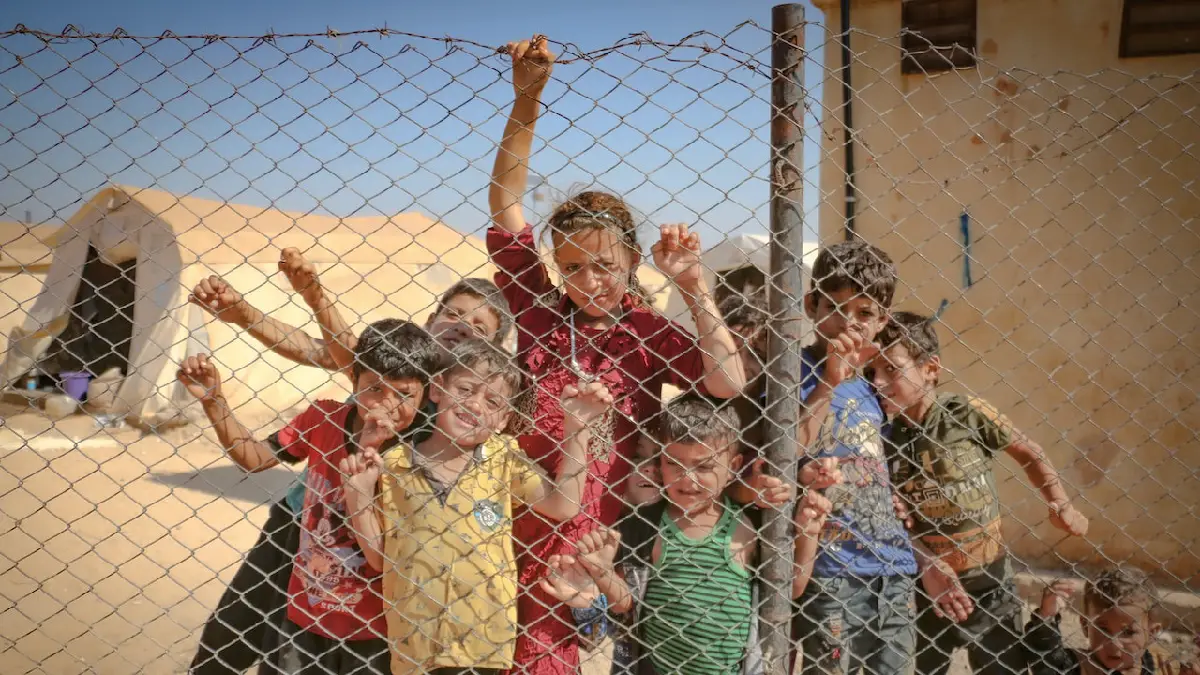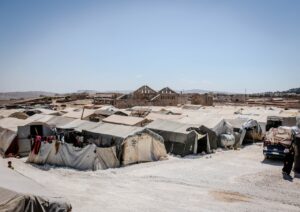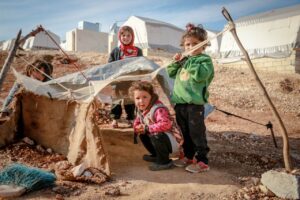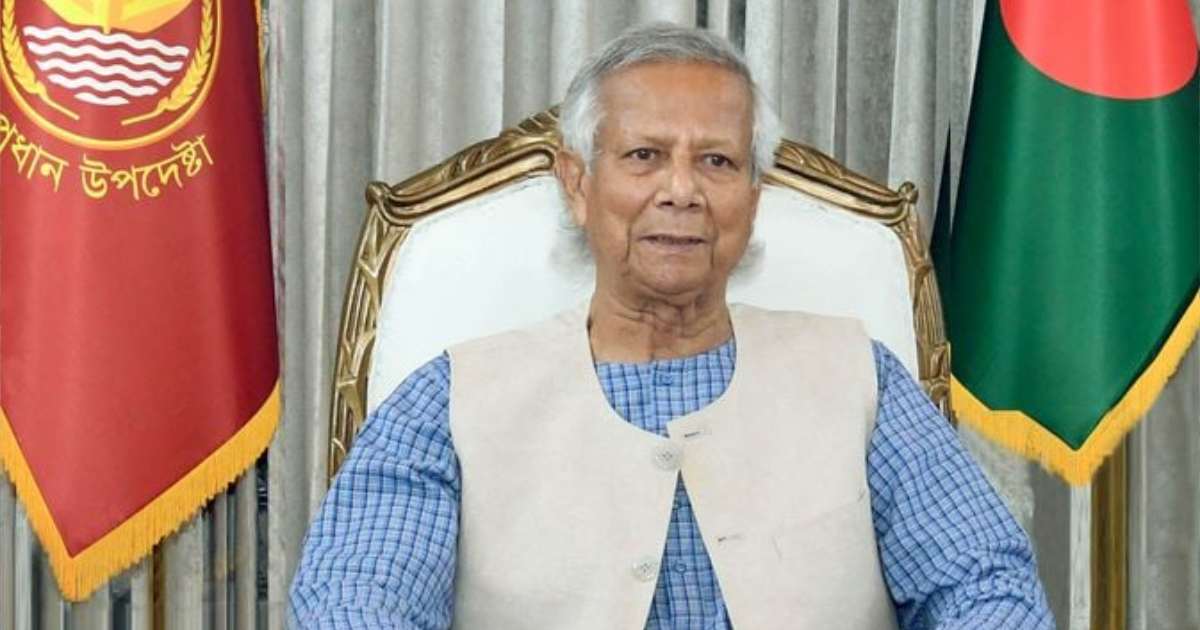Economy
Global Refugee Day Today

In recognition of the annual Global Refugee Day, the world stands united in honoring the strength, courage, and unwavering resilience of millions of individuals forced to flee their homes due to conflict, persecution, and violence.
This day serves as a reminder to the international community of the urgent need to address the challenges faced by refugees and to seek inclusive solutions that uphold their rights and dignity.
As the number of forcibly displaced people reaches staggering figures, Global Refugee Day takes on an even greater significance this year. According to the latest report by the United Nations High Commissioner for Refugees (UNHCR), the global displacement figures have reached a record high of over 82 million individuals. Among them, nearly 26.4 million are recognized as refugees, while others are internally displaced or seeking asylum.
The day’s commemoration aims to raise awareness about the profound struggles faced by refugees while emphasizing their resilience, talents, and contributions to society. It provides an opportunity to highlight success stories and initiatives that promote their integration, self-reliance, and empowerment. By doing so, the international community can collectively work towards fostering a more inclusive and compassionate world.

Throughout the day, various events and activities are organized worldwide to bring attention to the refugee crisis. From panel discussions and film screenings to art exhibitions and cultural performances, these events offer platforms for refugees to share their experiences and for individuals to understand the challenges they encounter. Furthermore, governments, non-governmental organizations, and communities come together to advocate for policies that ensure the protection and well-being of refugees.
At the heart of Global Refugee Day lies the pressing need to address the root causes of forced displacement and to find sustainable solutions. Governments and humanitarian organizations must collaborate to prevent conflicts, mitigate their impact, and promote peaceful resolutions. Additionally, concerted efforts are required to tackle the underlying factors, such as poverty, inequality, and human rights abuses, which often drive individuals to flee their homes.

Recognizing that long-term displacement can have a devastating impact on individuals and communities, initiatives aimed at supporting refugees in their host countries are crucial. Access to quality education, healthcare, and livelihood opportunities is vital for refugees to rebuild their lives and contribute positively to their host communities. It is imperative that governments provide robust support systems that facilitate integration and ensure the fulfillment of refugees’ rights.
Global Refugee Day serves as a powerful reminder that refugees are not defined by their displacement but by their resilience and aspirations. Countless refugees have overcome tremendous obstacles to rebuild their lives and make significant contributions in various fields, including education, healthcare, science, art, and entrepreneurship. Their stories of strength and determination inspire others to stand in solidarity and create an environment that embraces diversity and inclusivity.
While Global Refugee Day offers an occasion to reflect and take action, the challenges faced by refugees extend beyond a single day. It demands sustained commitment and collaboration from governments, civil society organizations, and individuals worldwide. By joining forces and addressing the root causes of displacement, supporting refugees in their journey towards self-reliance, and promoting policies that protect their rights, we can create a more compassionate and just world for all.

On this Global Refugee Day, let us reaffirm our commitment to standing with refugees, amplifying their voices, and working towards a future where forced displacement becomes a distant memory. Together, we can build a world that embraces the inherent dignity and potential of every human being, regardless of their background or circumstance.
Read More: Fathers’ Day Today, Have I Done Enough to Earn A Smile from My Father?
In conclusion, Global Refugee Day serves as a poignant reminder that behind the statistics and numbers, there are real people, with hopes, dreams, and stories to share. It is a day to acknowledge the immense resilience and strength demonstrated by refugees worldwide, as they navigate unimaginable challenges in search of safety and a better future. By recognizing their contributions, advocating for their rights, and working towards inclusive solutions, we can create a world where compassion triumphs over adversity, and where every individual, regardless of their origin, finds a place to call home.
Global Refugee Day is a call to action for us all to stand together, united in our commitment to build a more compassionate and inclusive world for refugees and for future generations.

Economy
Remittances Top $2bn in First 28 Days of September

Expatriate Bangladeshis sent approximately US$ 2.11 billion in remittances during the first 28 days of September in the fiscal year 2024-25, according to data released by Bangladesh Bank on 29 September.
Of this total, state-owned and specialised banks handled $679.10 million, while private banks received $1.43 billion in remittances.
Economy
Yunus Pledges Swift Reforms and Election in Bangladesh’s Interim Govt

Chief Adviser to Bangladesh’s interim government, Professor Muhammad Yunus, has vowed to expedite reforms and hold elections swiftly. Yunus, who recently assumed the role after the collapse of Prime Minister Sheikh Hasina’s 15-year administration, expressed his commitment during an interview with Tokyo-based news outlet NHK WORLD in New York on Sunday. He was attending the United Nations General Assembly at the time.
Following mass student-led protests that ended Hasina’s long-standing rule in August, Yunus stepped in as the leader of the caretaker government. Known for founding Grameen Bank, an institution providing microloans to the underprivileged, Yunus, along with the bank, earned the Nobel Peace Prize in 2006 for his efforts in poverty alleviation.
During the interview, Yunus emphasized that the interim government’s primary mission is to implement reforms promptly and ensure elections are held as soon as the groundwork is complete. He underscored the importance of success, stating, “Failure is not something that we can accept.”
Addressing the pivotal role of students in the ousting of the Hasina administration, Yunus acknowledged the sacrifices made by young people, referring to their involvement as part of a “revolution.” He highlighted his intention to engage the younger generation in shaping policy.
Furthermore, Yunus called for continued support from Japan, Bangladesh’s largest donor, during this crucial transition period. He stressed that Japan’s assistance is vital to stabilizing Bangladesh’s economy and fostering a democratic foundation in the nation.
Economy
Polythene Bags to Be Phased Out, Says Environment Adviser Rizwana Hasan

Syeda Rizwana Hasan, the Adviser for Environment, Forests, and Climate Change, announced today that steps will be taken to restrict the use of polythene shopping bags to safeguard future generations.
Starting from October 1, polythene bags will be banned in shopping malls, followed by a ban in kitchen markets from November 1.
“Everyone must take responsibility and stop using polythene voluntarily. Action against polythene producers will begin from November 1,” Rizwana Hasan stated during a seminar.
The Department of Environment (DoE) organized the seminar to raise public awareness about alternatives to banned polythene bags.
Rizwana Hasan highlighted that the restriction on polythene will be executed in phases according to legal provisions, and discussions with shopping centers and store owners are ongoing to ensure a smooth transition.
She also announced plans to make the government secretariat a plastic-free zone by December.
Other speakers at the seminar included Environment Secretary Dr. Farhina Ahmed, DoE Director General Dr. Abdul Hamid, Director Rajinara Begum, President of the Shop Owners Association Muhammad Helal Uddin, and Md. Arifur Rahman Bhuiyan, Assistant Professor of Environmental Science at BUP. They discussed the harmful effects of polythene and the need for alternative products.
Earlier, Rizwana Hasan inaugurated a fair showcasing eco-friendly alternatives to polythene bags and visited 24 stalls. The fair featured products from government and private entrepreneurs, including reusable bags, jute bags, paper bags, and items made from bamboo and cane.

